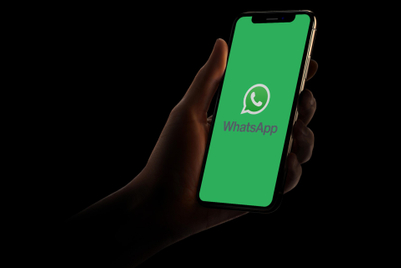
| PARTNER CONTENT |
To gain an understanding of what a ‘digital-native’ region means, one only needs to look at the numbers in Southeast Asia.
Mobile connectivity is 65% across the region while internet penetration is 71%, a good 9% and 14% higher than the global average. 90% of mobile users are digital natives and of these, 72% are willing to buy beyond basic needs.
All this translates into a internet economy valued at US$100 billion in GMV across online travel, e-commerce, online media and ride-hailing sectors in the region, a number that’s expected to triple by 2025.
For marketers, this ever-shifting landscape presents challenges but also a plethora of untapped opportunities, Vasuta Agarwal, MD, APAC, InMobi writes in the foreword to InMobi’s 2020 Mobile Marketing Handbook.
In the handbook, InMobi analyses the impact of mobile connectivity on three key areas, m-commerce, m-banking and m-entertainment, and interviews the region’s top marketers on challenges facing the SEA digital economy.
Here are some key insights:
Brand loyalty vs. what can a brand do for me?
Whether it is m-commerce, m-entertainment or m-banking, the SEA connected consumer wants an app that speaks to his or her need.
While the smartphone penetration rate is at 58.3 in the region, behind the United States’ 85, SEA users download an average of 3.5 apps, 0.5 unit more than the average US user—suggesting perhaps that SEA consumers are more concerned about whether a brand can satisfy a need than being loyal to it.
This is evidenced in the m-banking industry, where the rise of finance apps correlates to a drop in the unbanked population. Whereas 73% of SEA population was unbanked in 2014, it dropped to 43% by 2017. Some of these apps started out as infrastructure levers for mCommerce but have since transitioned to providing remittance, lending, SME funding and general banking services.
To succeed in this market, brands and marketers thus need to have a clear understanding of what consumers want, what they care about and what will turn them away. To achieve that, the acquisition of first party data is a priority, as Samsung’s Abhishek Grover notes.
More personalised and ‘sparkling’ experiences
The opportunity for mobile marketing abound in the region. In 2018, 14 billion people shopped through mobile apps—a number that is poised to grow by 20% by 2020.
And yet, with the abundance of choices in the market, and ever shorter attention spans, marketers need to come up with new ways to provide consumers with ‘sparkling’ experiences, notes Sudipto Roy from Mindshare.
One way to achieve that is gamification. SEA is the fastest growing gaming market, with a 22% YOY growth. But more importantly is the shift towards mobile, with mobile gaming capturing 67% of gaming revenue in 2019.
SEA’s connected consumers are no longer just looking for apps and products that satisfy their basic needs, but for ever more sophisticated formats that satisfy their entertainment needs. One of these formats is OTT. In SEA, OTT video audience is expected to rise from 48.4 million in 2019 to 74.8 in 2023, a 54.5% growth.
To respond to this, both foreign and regional OTT platforms are teaming up with leading telcos in the region to offer more seamless streaming services. Netflix has signed partnerships with Singtel and Starhub in Singapore, while iFlix is partnering with PLDT in the Philippines. Netflix also launched SEA’s mobile-only plan in Malaysia.

Cultural diversity in the region
Another key to provide personalised experiences is simply, to pay attention to SEA’s diversity. While this presents a challenge to brands not native to the region, it also means brand not only confined to holidays in the western calendar. The report notes spikes in buying interest in Indonesia before Ramadan, and in Thailand during the Bun Luang Festival.
This also leads to that question: does a super app or its single-service counterpart serve the connected consumer better? Both have its merits. ‘Superapps' allows marketers to harness rich data and deliver native, personalised experiences but a few selected single-service apps are also faring very well, perhaps due to their understanding of local culture.

As the digital economy is poised to clock up US$300 billion in the next five years, the future is bright for marketers who not only understand the nuances of region but also equip themselves with the latest technological and data analytical know-how to forge seamless experiences that speak to the right audiences.
For more insights, download InMobi’s 2020 Mobile Marketing Handbook now.


.jpg&h=334&w=500&q=100&v=20250320&c=1)
.jpg&h=334&w=500&q=100&v=20250320&c=1)
.jpg&h=334&w=500&q=100&v=20250320&c=1)



.png&h=334&w=500&q=100&v=20250320&c=1)

.png&h=334&w=500&q=100&v=20250320&c=1)








